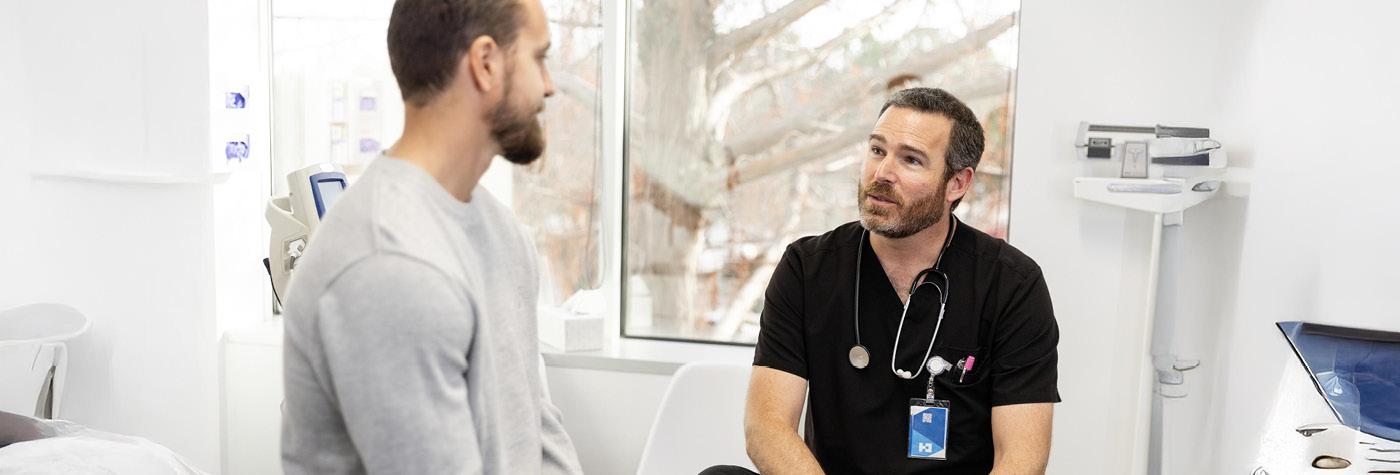If you or someone around you is experiencing signs of a heart attack, such as chest pain, shortness of breath, nausea, or discomfort in the arms, neck, jaw or back, call 911 immediately. Do not wait or try to drive yourself to the hospital. Every second counts, and emergency responders can begin life-saving treatment on the way to the hospital.
If your care team believes you are having a heart attack, you will typically be taken to the cardiac catheterization lab. Here, your doctor can identify and treat the blockage. You may also receive medicines as part of your treatment.
During cardiac catheterization, a thin tube called a catheter is guided through a blood vessel from an opening in the groin to the heart. The catheter can measure pressure and blood flow. Some types of heart problems can be repaired from within the blood vessels during a cardiac catheterization procedure.
During angioplasty, your provider places a tiny balloon inside an artery clogged with fat, cholesterol and other substances. When inflated, the balloon opens the artery, restoring blood flow.
Stents are often inserted following angioplasty. During a stent placement, your provider places a wire mesh tube called a stent in a clogged artery. This serves as a scaffolding device, holding the artery open and increasing blood flow.
Medicines may be used during or after a heart attack to break up clots or relieve pain.
- Antiplatelet medicines can help prevent blood clots from forming.
- Anticoagulant medicines can help dissolve blood clots.
- Beta blockers can help reduce the heart’s workload and oxygen demand.
- Nitrates can help relieve chest pain and improve blood flow to the heart.
- Pain medicines may be given to ease chest pain.
- Oxygen may be helpful if your blood oxygen levels are low.
Cardiac procedures may help diagnose (and in some cases treat) NSTEMI.
A coronary artery bypass grafting procedure, also known as a heart bypass, is an open-heart surgical procedure used to bypass, or replace, arteries blocked by plaque.
During a CABG procedure, a patient is placed under general anesthesia and a heart/lung bypass machine takes over the function of these organs.
A cardiothoracic surgeon begins the procedure by surgically opening the chest and breaking the sternum to access the heart. From there, a blood vessel from another part of the body, often the leg, is placed into the heart and used to bypass an artery blocked by plaque buildup. A single bypass procedure may be used to bypass multiple blocked arteries at one time.
Once the procedure is complete, the sternum is closed back up and wired together for stability. Then, the chest is stitched closed.
Following a heart bypass, the patient will be closely monitored in a cardiovascular intensive care setting for a day or two. They will then be moved to a regular room for additional monitoring and recovery. Most patients can be discharged from the hospital within a few days to a week.
Recovery at home after a CABG procedure can take several months to a year, and care must be taken as the sternum heals.
ECMO, or extracorporeal membrane oxygenation, pumps blood through a device that adds oxygen to it and then pumps it back into the patient’s body, performing the function of the heart and lungs. ECMO, which can be used for both adults and children, provides long-term management of heart and/or lung failure while the patient recovers or awaits a transplant or ventricular assist device.
ECMO is sometimes also called ECLS, or extracorporeal life support.








